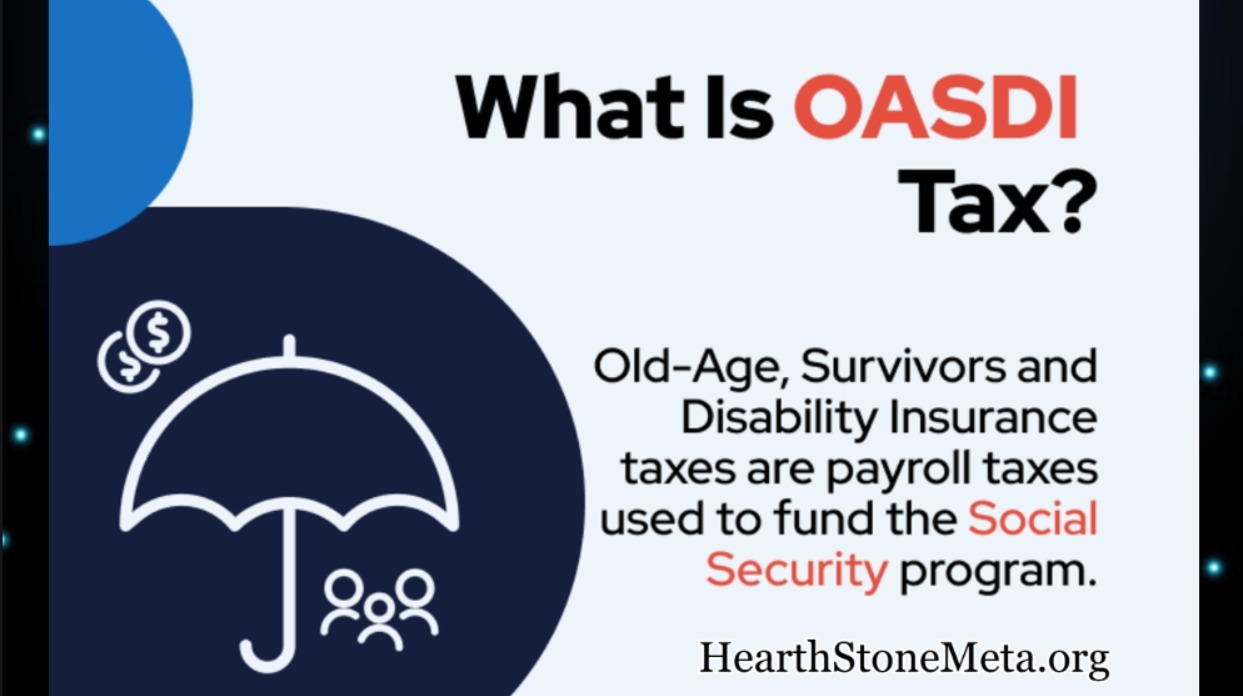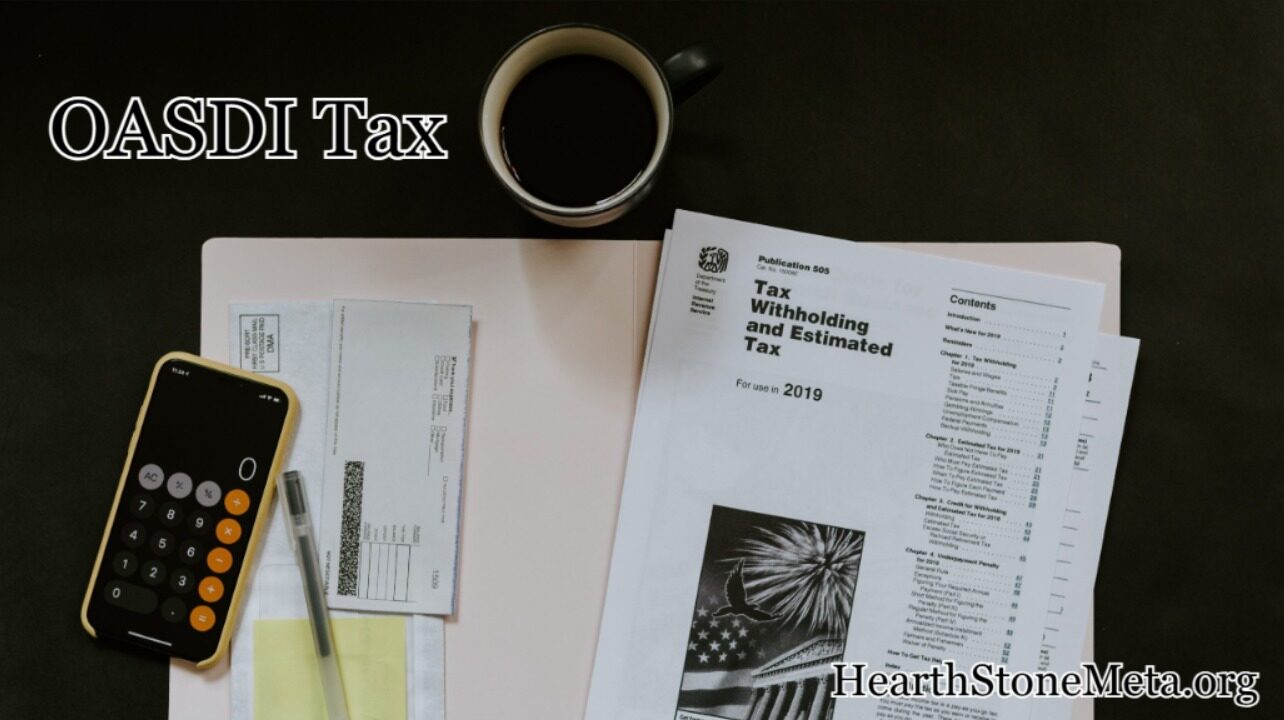Introduction
The OASDI tax (Old-Age, Survivors, and Disability Insurance tax) is crucial to the U.S. Social Security system, ensuring financial support for retirees, disabled individuals, and surviving family members.
This mandatory payroll tax is deducted from employees’ wages and matched by employers, which is vital in securing future benefits.
Understanding the OASDI tax rate, limits, deductions, and how it affects your paycheck is essential for effective financial planning.
In this guide, we’ll break down everything you need to know about OASDI tax in 2024, including the latest updates and how it impacts your earnings.
What is OASDI Tax?

OASDI (Old-Age, Survivors, and Disability Insurance) tax is a federal payroll tax that funds Social Security benefits.
It is automatically deducted from employees’ wages and matched by employers to support retirees, disabled individuals, and survivors of deceased workers.
The tax is mandated by the Federal Insurance Contributions Act (FICA) and is a crucial component of the Social Security system in the United States.
OASDI Tax Rate
As of 2024, the OASDI tax rate remains at 6.2% for employees and 6.2% for employers, totaling 12.4% of an employee’s wages.
Self-employed individuals are responsible for the full 12.4% under the Self-Employment Contributions Act (SECA), though they can deduct half of the tax when filing federal income taxes.
OASDI Tax Limit
The OASDI tax is subject to an annual wage limit, meaning only earnings up to a certain threshold are taxable.
Any wages above this limit are not subject to the 6.2% OASDI tax but may still be subject to Medicare tax.
OASDI Tax Limit 2024
For 2024, the OASDI taxable wage limit is set at $168,600. This means that an individual earning more than this amount will only pay Social Security tax on wages up to this limit.
The maximum OASDI tax an employee will pay in 2024 is $10,459.20 ($168,600 x 6.2%).
OASDI Tax Deduction
OASDI tax is deducted from every paycheck before an employee receives their net earnings.
Employers also contribute an equal amount, effectively doubling the total contribution to the Social Security system.
The tax deduction is non-refundable, but it ensures future eligibility for Social Security benefits upon retirement or disability.
OASDI Taxable Wages
OASDI tax applies to most wages, salaries, bonuses, and commissions earned by employees. However, certain types of income are exempt, including:
- Investment income (capital gains, dividends, and interest)
- Pension payments
- Rental income
- Some employer-provided benefits
OASDI Tax Percentage
The OASDI tax percentage is consistently 6.2% for both employees and employers. However, self-employed individuals must cover both portions, making their total contribution 12.4%. This percentage remains unchanged unless Congress enacts legislative changes.
OASDI Tax on Your Paycheck
Every paycheck includes a deduction for OASDI tax, reducing the take-home pay of employees.
Employers are responsible for withholding this tax and remitting it to the IRS. Employees can review their pay stubs to see how much they contribute to Social Security.
Example Calculation
If an employee earns $80,000 annually, the OASDI tax withheld from their paycheck will be:
- $80,000 x 6.2% = $4,960 deducted for the year
- The employer also pays $4,960, bringing the total contribution to $9,920
OASDI Tax 2024
For 2024, the main changes to OASDI tax include:
- Increased Wage Limit – The taxable earnings cap rose to $168,600, up from $160,200 in 2023.
- No Change in Tax Rate – The OASDI tax rate remains 6.2% for employees and 12.4% for self-employed individuals.
- Higher Maximum Tax – Employees earning above the limit will pay a maximum of $10,459.20 in OASDI tax, up from $9,932.40 in 2023.
Who is Exempt from OASDI Tax?

Some workers and earnings are exempt from OASDI tax, including:
- Certain state and local government employees with separate pension plans
- Religious groups that opt-out for conscientious reasons
- Nonresident aliens in specific visa categories
- Students working at their enrolled schools
Conclusion
The OASDI tax plays a vital role in funding Social Security benefits for millions of Americans.
Understanding the OASDI tax rate, limits, deductions, and taxable wages is crucial for both employees and employers.
As 2024 brings new wage limits, staying informed will help taxpayers plan effectively and ensure they meet their Social Security contributions.
